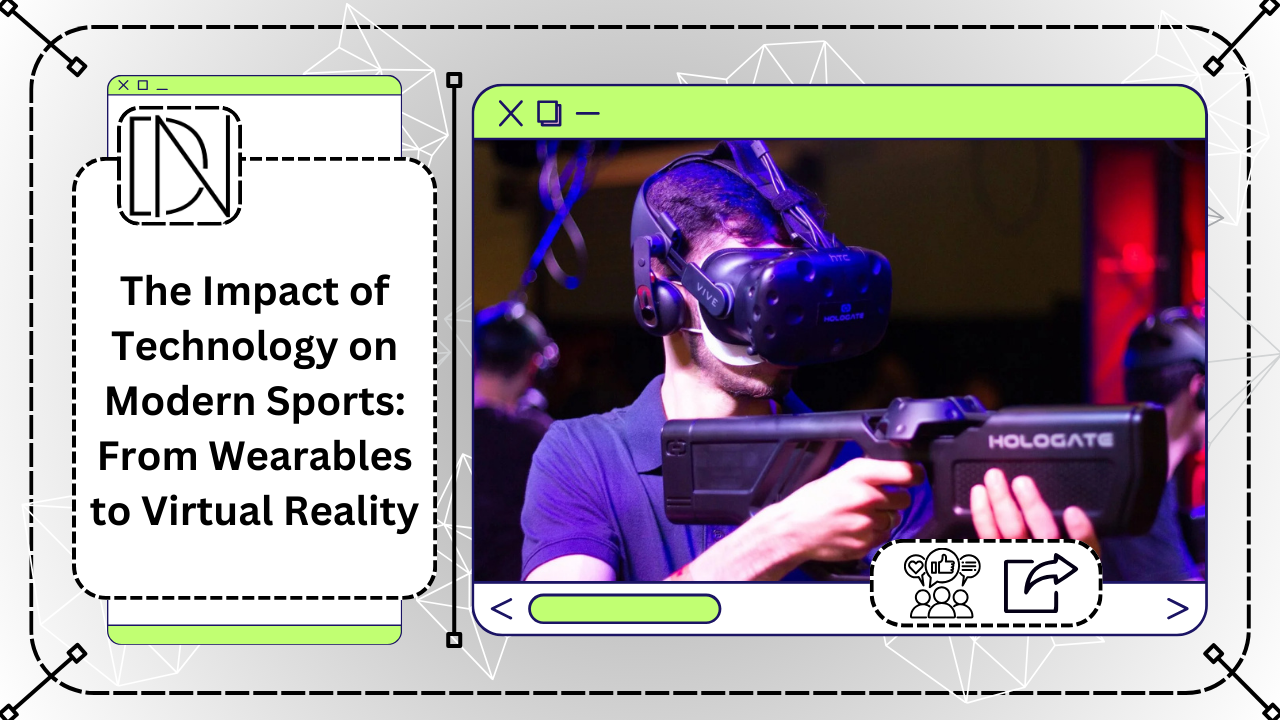Introduction
Technology has revolutionized every aspect of our lives, and the world of sports is no exception. From wearables that track athletes’ performance to virtual reality experiences that transport fans to the heart of the action, technology has transformed the way we play and experience sports. In this blog post, we will explore the impact of technology on modern sports and how it has enhanced both the performance of athletes and the experience of fans.
Wearables: Enhancing Performance
One of the most significant advancements in sports technology has been the development of wearables. These devices, such as fitness trackers and smartwatches, provide athletes with real-time data about their performance, allowing them to track their progress, set goals, and make informed decisions to improve their skills.
For example, GPS-enabled wearables can track an athlete’s speed, distance, and route, providing valuable insights into their training and performance. Similarly, heart rate monitors can help athletes optimize their training by providing data on their heart rate zones and recovery times.
Wearables have also revolutionized injury prevention and rehabilitation. Athletes can now use smart knee braces, for instance, to monitor their joint movements and detect any potential issues before they become serious injuries. This technology allows athletes to take proactive measures to prevent injuries and recover faster when they do occur.
Virtual Reality: Immersive Fan Experience
Virtual reality (VR) has taken the sports world by storm, offering fans an immersive experience like never before. With VR headsets, fans can now feel like they are sitting courtside at a basketball game or on the sidelines of a football match, even if they are thousands of miles away.
VR technology allows fans to experience the thrill of the game from different perspectives, providing a level of engagement that traditional broadcasting cannot match. Fans can choose their own camera angles, replay key moments, and even interact with other fans in virtual environments, creating a sense of community and camaraderie.
Moreover, VR has opened up new opportunities for training and scouting in sports. Coaches can use VR to simulate game scenarios and train athletes in a safe and controlled environment. Scouts can also use VR to evaluate players’ skills and potential, eliminating the need for travel and reducing costs.
Data Analytics: Gaining the Competitive Edge
Another significant impact of technology on modern sports is the rise of data analytics. With the advent of big data, teams and athletes can now analyze vast amounts of information to gain insights and gain a competitive edge.
By collecting and analyzing data on player performance, opponents’ strategies, and game statistics, teams can make more informed decisions on tactics, training, and player recruitment. Data analytics can reveal patterns, trends, and correlations that were previously invisible, helping teams identify strengths and weaknesses and optimize their performance.
Furthermore, data analytics has also transformed the fan experience. Fans can now access real-time statistics, player profiles, and interactive visualizations, enhancing their understanding and enjoyment of the game.
Conclusion
Technology has undoubtedly had a profound impact on modern sports. From wearables that enhance athletes’ performance and prevent injuries to virtual reality experiences that immerse fans in the game, technology has transformed the way we play and experience sports. With continued advancements in technology, we can only expect further innovations that will shape the future of sports.
for more like this check our blog on Top Trending Games of 2023












